So exactly what are the secrets to growing delicious, nutritious and more importantly, straight carrots?
Many gardeners are often discouraged when they go to harvest carrots from their garden. Unfortunately, instead of pulling up the straight, “grocery store style” cylinders they were expecting, they find themselves harvesting a tangled mess of disjointed, stunted roots.
Carrots certainly come with a few special growing requirements to grow strong and straight. But that doesn’t mean they are difficult to plant, or require a lot of work to produce a great crop.

In fact, provide them with just a few simple but key needs, and they will grow beautifully straight almost anywhere. Including in a traditional garden, raised beds, or even in pots and containers. And here’s how:
The 3 Simple Secrets To Growing Straight Carrots
#1) It All Begins In The Dirt
The key to growing straight carrots all starts with planting them in the right soil. Carrots need loose, fertile, well-draining soil to flourish. With a major emphasis on the “loose” portion of those three requirements.
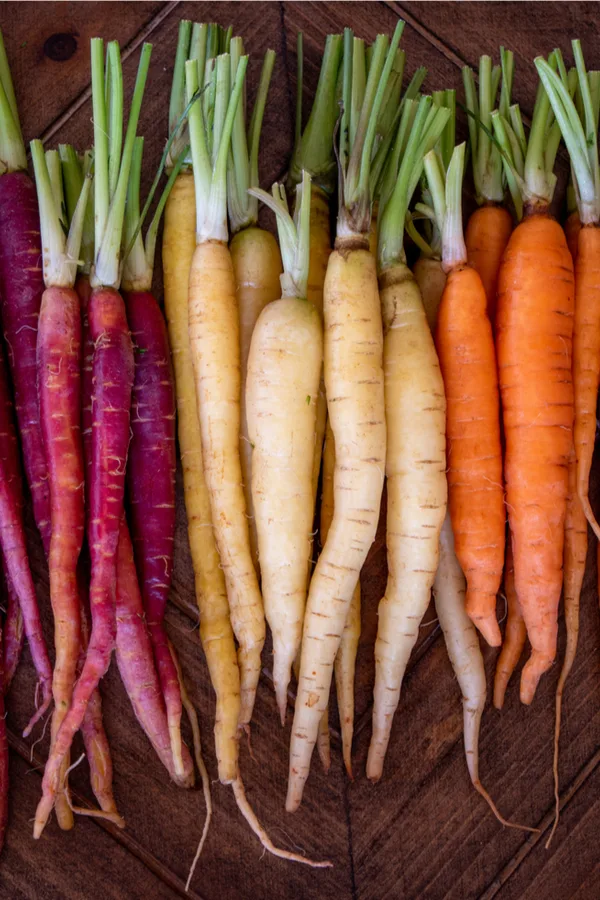
Plant carrot seeds in hard soil and they will struggle to sprout and survive. Not only with germinating, but more importantly, with growing to their full size and slender shape.
Carrots need 8 to 12 inches of loose, sandy-like soil depth for maximum growth. This allows seedlings to grow freely, and without obstruction. The crazy, stunted carrots many pull from the ground at harvest are not a result of bad seed, but of the root crop being unable to expand freely in the soil.
To prevent this, it’s critical to work a few key ingredients into the soil before planting. For starters, begin by working in generous amounts of compost. Compost not only lightens the soil, but fills it with the nutrients carrots need.
In addition to compost, adding in a bit of sand and peat moss will pay big dividends as well. Both help to lighten the soil structure allowing for easier penetration of the carrots as they mature.
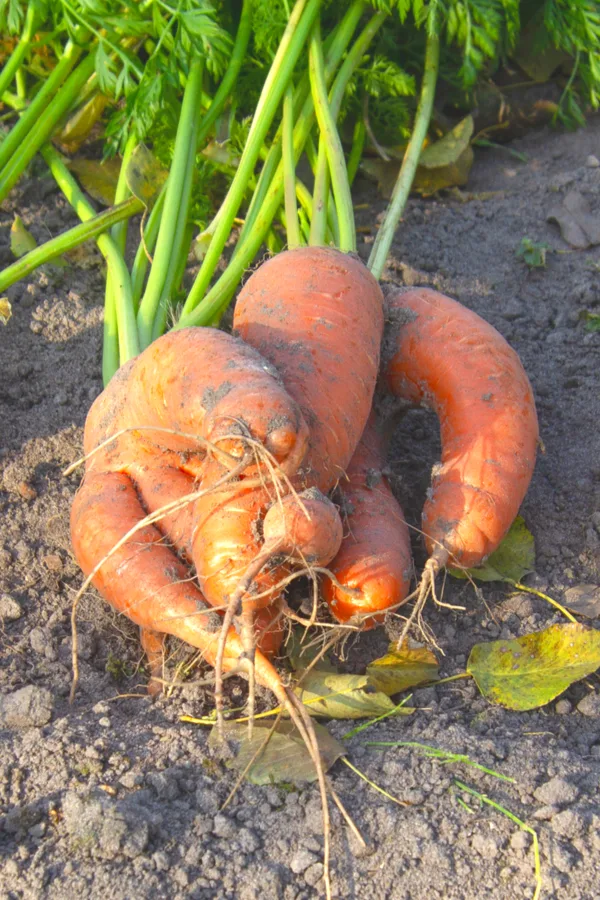
If growing in raised beds or containers, the same principals apply. Start by choosing a vessel that is at least 12 inches deep. Then, fill it with an equal mix of potting soil and compost along with a bit of sand and peat added in as well.
#2 Keep Weeds Out! – Growing Straight Carrots
Once you have the proper soil in place, it is all about keeping your carrots from the competition. Carrots do not like competitors in any shape or form. Not from weeds, or as you will see in the next section, from other carrots either.
Because of this, it’s important to keep any and all weeds out of your growing space. Especially early on in the germination and seedling process.
Carrot seeds germinate slowly. In fact, some varieties take as long as 2 to 3 weeks before poking through the soil. And this process can be delayed even longer if weeds are allowed to pop up alongside the seeds.
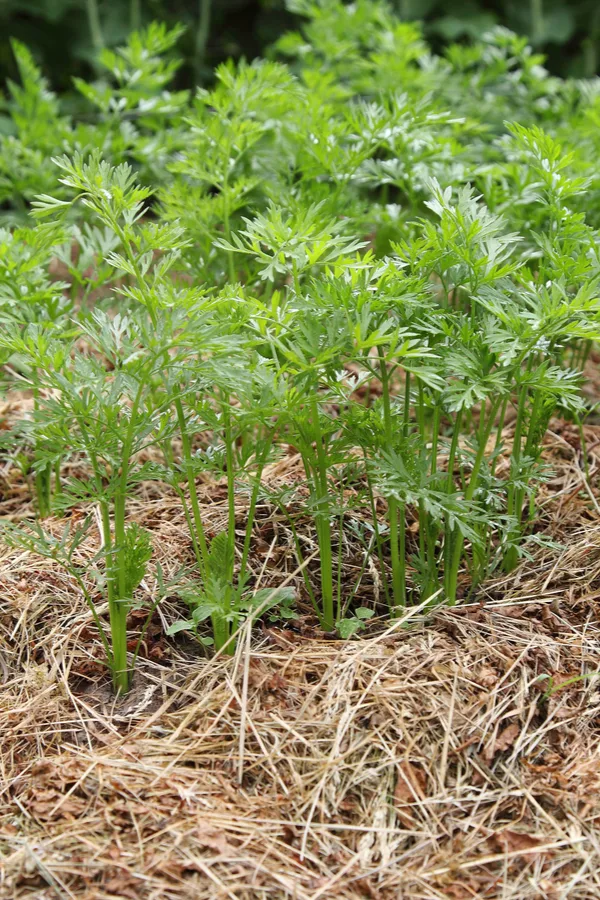
When planting, cover the soil immediately with a thin (1/2 to 1″) layer of mulch to help keep weeds out, and moisture in. Straw, shredded leaves or a thin layer of compost are all excellent early mulching choices.
Be sure to keep it thin enough to allow the tender carrot seedlings to pop through the soil. Water seeds every few days to keep them from drying out, removing any competing weeds that might pop up before seeds germinate.
#3 Thin To To Win! – Growing Straight Carrots
Last but not least – thin those seedlings! One of the hardest chores for gardeners is to thin young vegetable seedlings from their garden. There is just something truly difficult about taking the life of a fledgling seedling. See : How & Why To Thin Seed Crops
But with carrots, thinning is an absolute must! If seedlings are left too close to one another, they will grow together in a tangled mess. And come harvest time, you are left pulling up a carrot ball that is nearly impossible to use.
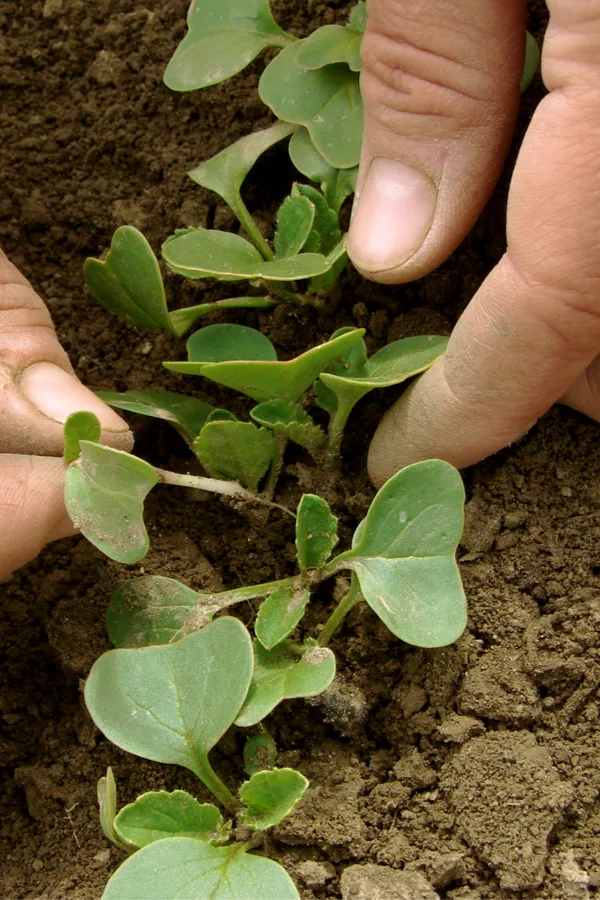
Thin carrots in a garden setting to allow for 2 inches between each carrot. This will provide ample room for strong individual growing. If planting in raised beds or containers, allow at least 2″ in any direction between plants.
And wherever you plant, give your crop as much sunlight as possible. Although carrots will grow in partial shade, they will perform best with at least 6 hours of full sun each day.
Once seeds have germinated, add three to four inches of additional straw or shredded leaves between plants. Carrots compete for nutrients in the ground, so don’t allow weeds to steal away valuable resources. Mulching also keep the soil moist and loose for better growth.
Harvesting Carrots – Growing Straight Carrots
Depending on the variety grown, carrots can be ready for harvest in as little as 10 to 16 weeks.
Varieties like Little Finger are designed to grow more as baby carrots, while varieties like Atomic Red can grow long, deep roots that are perfect for all kinds of culinary uses.
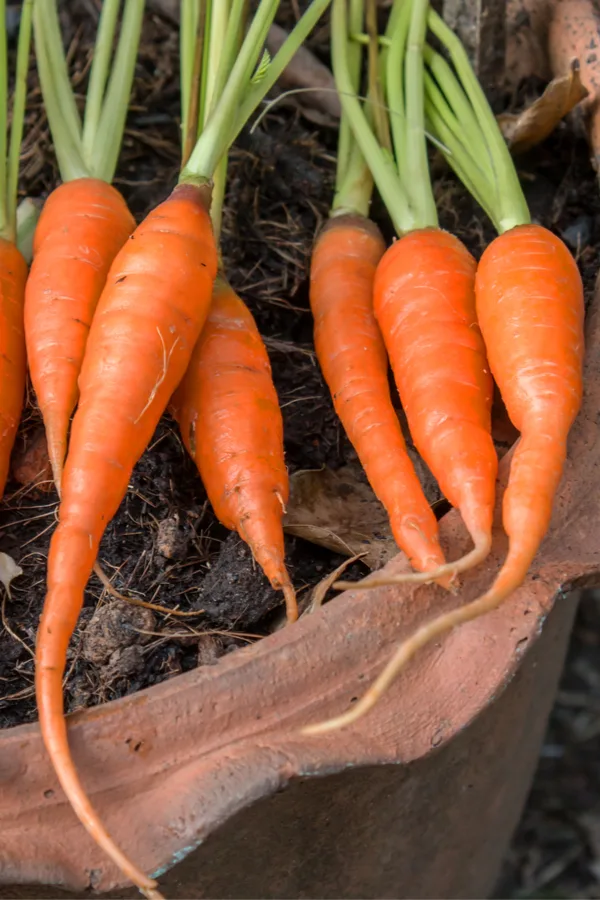
With that said, carrots can be harvested at any point, although allowing at least 1/2 to 3/4 inch in diameter is best for developing their flavor. Carrots do much better in cooler weather. Plant in early spring for an early summer harvest, or in late summer for a late fall harvest.
In the fall, a few frosts will actually improve the flavor of the carrots still left in the ground. Complete final harvesting before the ground freezes over.
Saving Seeds – Growing Straight Carrots
Unlike many common vegetables, carrots are a biennial crop. That means instead of the usual 1 year growing cycle, they actually need 2 years to fully mature and seed.
During their first year of growth, carrots develop their edible roots. But if you would like to grow your own seeds, you will need to allow a few of your carrots to remain until the following year to allow them to form seeds for saving.
Here is to growing beautiful, straight carrots in your garden this year!

This Is My Garden is a website dedicated to spreading the love and knowledge of gardening around the world. We publish two new garden articles each week. This article may contain affiliate links.
